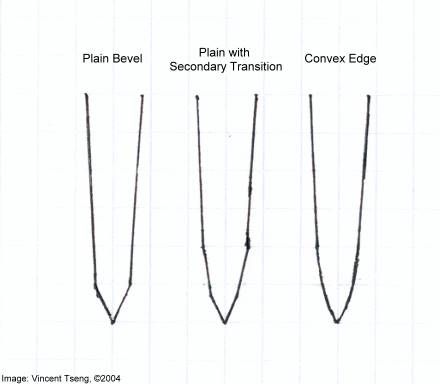I am not a blade expert but in my years of owning and useing knives, I have come to the idea that a flat ground and thin blade is the best type of blade for most uses. I know that some people need/want a 3/8" thick hollow ground beast but what is the point if all you are doinf is using it as a knife and not an ax or a chisel? Am I missing something? Why are flat ground blades less common than other grinds? You would think that they would be the most common blade.
I remember the first time I realized that blade thickness and grind had more to do with cutting ability than most other things. I was 12, I was cutting an apple with my Buck 112 which I always carried when my dad wanted to try it since it always had a razor sharp edge on it. He gave me his Buck knife that had a much thinner blade and I think was flat ground, it was not a 110 or 112. It cut the apple with much less force on my part even though it was not as sharp. He was amazed at how much effort it took to cut his apple and almost cut himself because of the extra force needed.
I now have a Kershaw Vapor that is kept sharp but not razor sharp and it is a great cutter at work. It is a cheap knife ($20) but it seems to work better than my Benchmade some of the time because of the thin flat ground blade.
Please fill me in on what I am missing. Why are not more knives flat ground? Is it a strength issue or a looks issue? Does it have to do with cost? I really am curious as to why a design that seems to work better isn't more popular.
I remember the first time I realized that blade thickness and grind had more to do with cutting ability than most other things. I was 12, I was cutting an apple with my Buck 112 which I always carried when my dad wanted to try it since it always had a razor sharp edge on it. He gave me his Buck knife that had a much thinner blade and I think was flat ground, it was not a 110 or 112. It cut the apple with much less force on my part even though it was not as sharp. He was amazed at how much effort it took to cut his apple and almost cut himself because of the extra force needed.
I now have a Kershaw Vapor that is kept sharp but not razor sharp and it is a great cutter at work. It is a cheap knife ($20) but it seems to work better than my Benchmade some of the time because of the thin flat ground blade.
Please fill me in on what I am missing. Why are not more knives flat ground? Is it a strength issue or a looks issue? Does it have to do with cost? I really am curious as to why a design that seems to work better isn't more popular.

